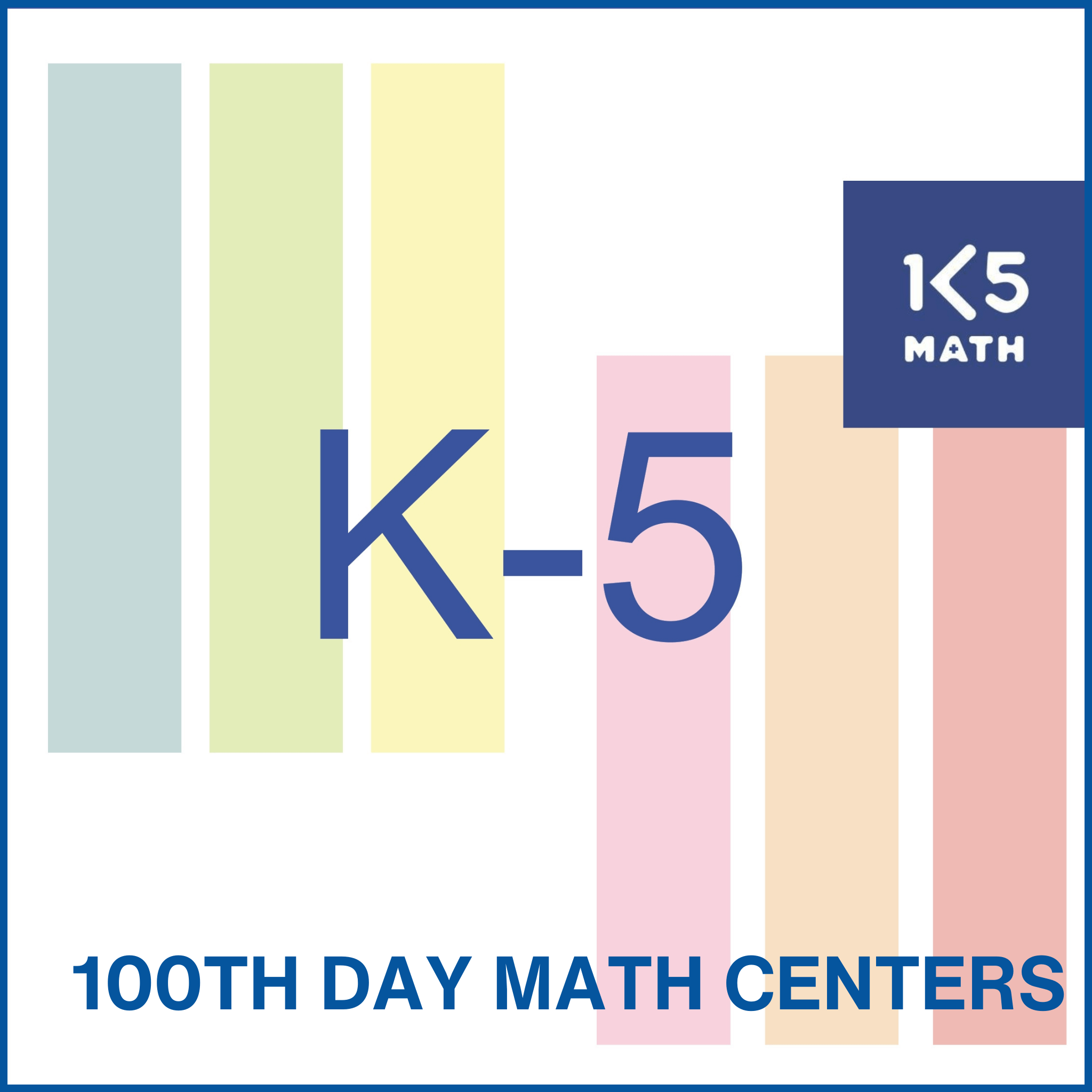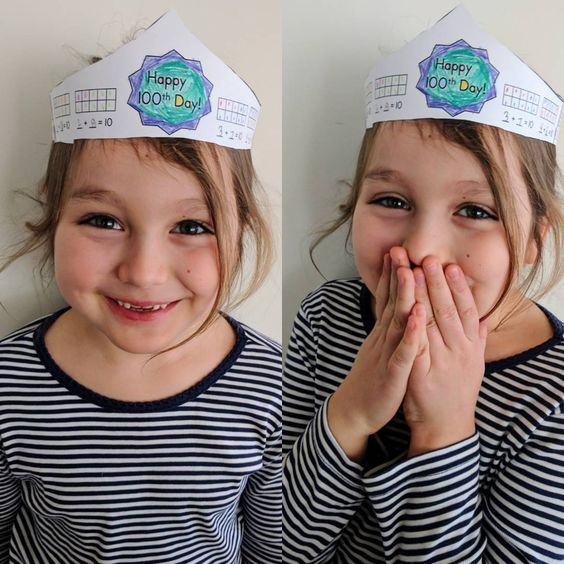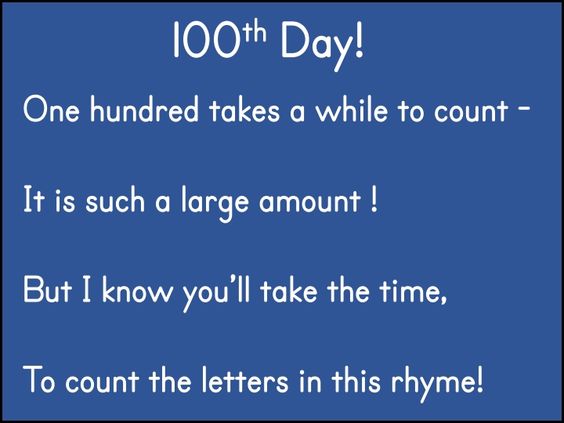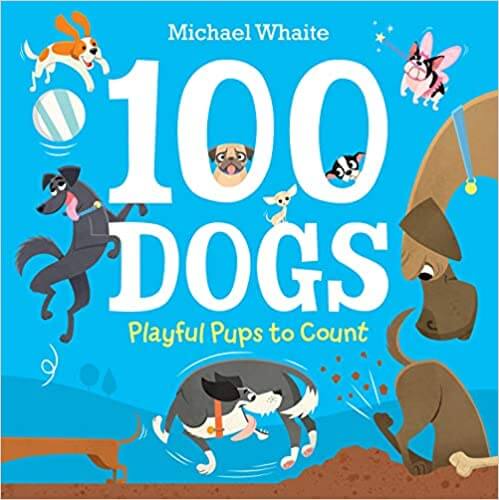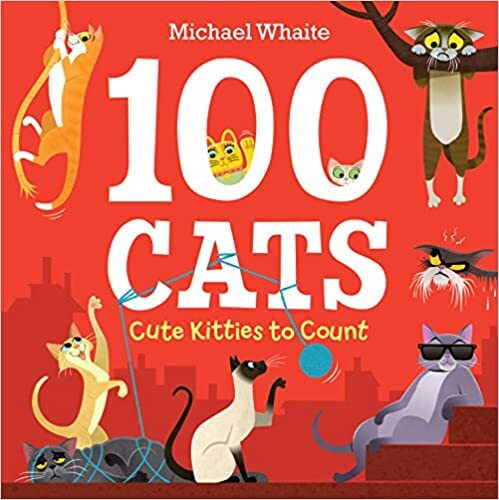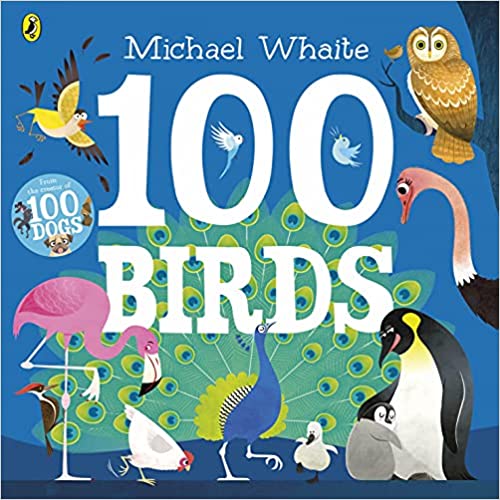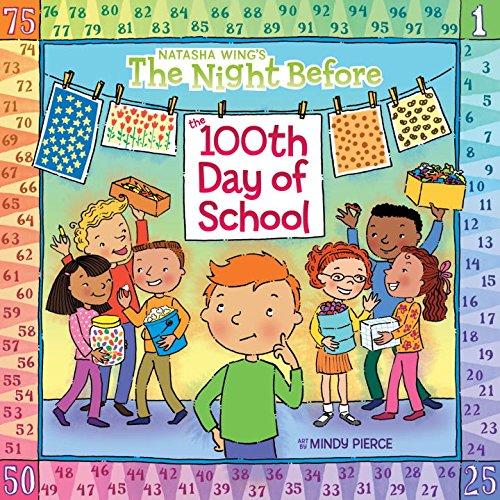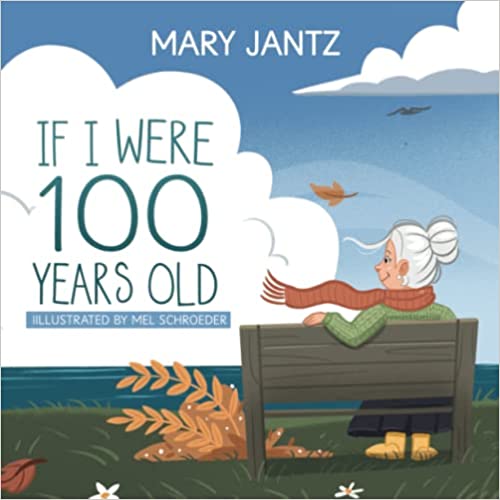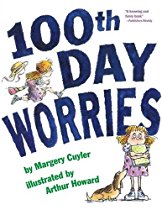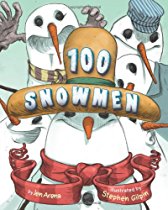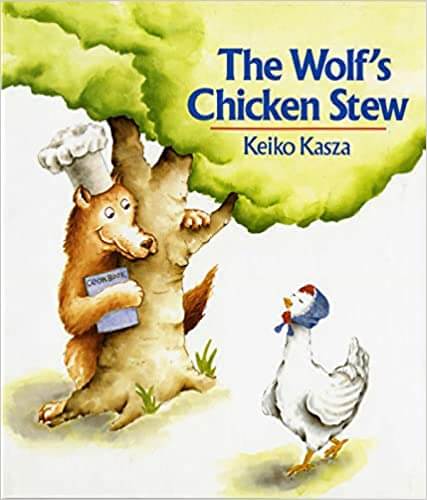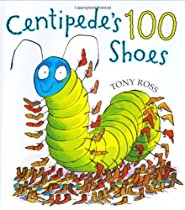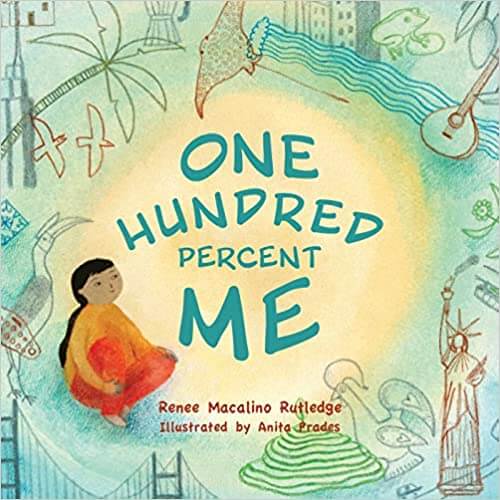100th Day of School
From the very first day of school, many classes keep track of the number of days they've been in school in anticipation of the 100th day. Days are often kept track of by counting straws or craft sticks, ten of which become a "ten bundle," providing ongoing opportunities for counting by tens and ones and developing place value concepts. More than just a milestone worth noting - the 100th day of school is the perfect time to have fun with the number 100 while exploring counting, sorting, patterning, measuring and various other math skills and concepts.
Click on the 100th Day Math Centers link below to download a FREE set of 100th Day Math Centers. We'd love to see what you do. Tag us on social media and share some pictures!
Need more ideas? Visit our page on hundred chart games and 100 dot puzzles or scroll down to read ideas submitted by visitors to this page.
100TH DAY OF SCHOOL READ ALOUDS: Click on a cover to purchase from Amazon
Amazon Associates Disclosure
K-5mathteachingresources.com is a participant in the Amazon Services LLC Associates Program, an affiliate advertising program designed to provide a means for sites to earn advertising fees by advertising and linking to Amazon.com
100th DAY OF SCHOOL IDEAS FROM VISITORS TO OUR WEBSITE
For more
100th day of school ideas read the contributions below made by visitors to our website. Please note submissions are no longer being accepted.
Race to 100 and Number Grid Puzzles contributed by Maribel (New York)
Two of the center activities I've used the last few years on the 100th day
of school are Race to 100 and 100 Grid Number Puzzles.
Race to 100
Materials: 2 dice, 200+ craft sticks, 20 rubber bands, sentence frame
Players: 2 or more
1. Players take turns. For each turn, a player rolls the dice and picks up the
appropriate number of craft sticks.
2. Every time a player has 10 sticks, s/he bundles them with a rubber band.
When a player has 10 bundles of 10 sticks each, s/he puts a rubber band around
them to make a large bundle of 100. After each turn the player must say,
"I have __ tens and __ ones. I have ___ sticks in all" (I have this
sentence frame written on a card).
3. The game ends when one player reaches 100. Each player then counts his/her
total number of craft sticks and records the number.
100 Grid Number Puzzles: Ahead of time photocopy some completed 0-100 number grids on card and laminate.
I try to copy each one on a different colored card to make it easier to manage
at clean-up time. Cut up the grids in different ways. Students work in the
center with a partner to put a puzzle back together. This activity creates lots
of good talk as partners discuss where the pieces should go. It is also a good
indicator of student's understanding of place value!
Reading on the 100th Day of School contributed by Debbie (Mansfield, MA)
One of our 100th day of school traditions is reading for 100 minutes. The children can bring in a pillow or a blanket that day. I break the time into four 25 minute sessions. This is something the children look forward to each year. I teach a multi-age 1st - 3rd grade class. We love snuggling up with blankets and enjoying a good book!
Roll to 100 contributed by Sarah (Tennessee)
Roll to 100 is always a popular activity in my class on the 100th day of school. All you need are a 100
grid for each player, 2 dice, and crayons of different colors. Directions are
as follows:
1. Each player estimates how many rolls it will take to reach 100.
2. Take turns rolling the dice and adding together the two numbers you rolled.
3. Color in that total number of squares on your hundred chart. Work in number
order and use a different colored crayon for each turn.
4. When you reach 100 count the number of rolls it actually took.
Spend One Hundred Dollars contributed by Jenny (4th Grade teacher, Chicago)
The week before the 100th day I ask students to bring in store catalogues. On the 100th day they choose one catalogue from our collection and have to spend as close to $100 as possible, without going over. Last year a student was able to spend exactly $100. This activity involves lots of addition and multiplication, as well as lots of friendly competition as they all want to be the one who spends the amount closest to $100.
Our History One Hundred Years Ago contributed by Denise Yuse (Seabrook, NH. USA)
Go back 100 years in history and show students the changes that have been made throughout our culture. When I first did this the Girls Scouts organization was 100 yrs old. Fenway Park first opened. The potential is amazing and the discoveries are full of useful information. We discovered so much more about our town due to the town's historians' involvement with pictures. We made posters comparing then and now. It was so much fun. We printed everything we found online and sorted those photos into categories. The children went home with end products that were full of useful information.
Estimation/ Measurement contributed by Liz Finan (Fort Ashby, West Virginia)
I give each student a replica of a footprint. They record their name on the foot. Starting at a taped line on the hallway floor, they estimate how far 100 feet would be down the hall and tape their foot to the floor at that spot. I have a roll of 100 laminated feet each exactly 12 inches long. The master came from an old Everyday Math Resource book. We start at the taped line and unroll the line of feet and count as we go. We decide who had the best guess. It is always interesting how many students over estimate. Then we estimate and predict how long our class would be lined up head to foot, including teachers, along the line. We have also compared the length of our class with other rooms.
Estimation Jar contributed by Rebecca (Philadelphia)
Love all the ideas on this page! Two partner activities that I've used in
3rd grade are:
1. How tall is a stack of 100 pennies? 100 nickels? The coin of your choice?
Students work together to stack the coins and then need to decide which
measuring tool to use to measure their stack.
2. Each letter of the alphabet is assigned a point value. A=5, B=2, C=3 etc.
Students work with a partner to write as many words as they can that equal 100
points.
We also usually do an estimation jar activity. Before the kids arrive I fill
three clear plastic jars with objects of the same type (one year I used
popcorn, another year I used small marshmallows). In one jar I put 100 items,
in another jar more than 100, and in a third jar less than 100. I label each
jar Jar A, Jar B, Jar C. Students estimate which jar has exactly 100 items.
Then they graph their guess with a post-it. At the end of the day the jar with
100 objects is revealed and the kids calculate how to share the contents
equally. The jar contents are then shared and eaten. The kids love this part!
100 Exercises contributed by Debbie (Texas)
My students and I do 10 different exercises 10 times. After each set of 10 ,
I write the number 10 on the board. When we are finished we go back and count
by tens to 100.
We also count to 100 everyday by 2s,5s, and 10s. We try to count by 10s
starting with a number other than 10 (ie,22,32,42...or 55,65,75,85,95...)
We also predict how far we can get from our classroom by walking 100 steps.
Then we go for a walk to find out.
I ask my colleagues to bring some of their collections from home to show the
kids. Then I read a book called Collections. After that I have the kids bring a
collection of 100 things from home to share and count by 10s.
We make a 100 poster and see how many different ways we can show 100 (ie one
hundred in words, 100 in numerals, 100 in sign language, 100 tally marks, 100
in Roman numerals, one hundred dots on dominoes, 100 using 10 frames...)
We count backwards from 100-1 while passing a ball around the circle.
100th Day Dots contributed by Liz McCaw (Nanaimo BC)
Using a graphic organizer with ten sections spreading out from a circle on the centre of the paper, Kinders print 100 in the circle and then stamp ten dots with a bingo dobber in each section.
5 Activities for the 100th Day of School contributed by Sara (Sunset Park, Brooklyn)
I love the 100th day of school! Each year my 1st grade team come up with 5 activities. Each teacher prepares one activity and the students rotate through all 5 activities. They love going to visit the other teacher's classrooms. Last year when they came to my classroom students paired up and counted 100 objects from our math center (snap cubes, color tiles, pattern blocks etc.) They made 10 piles of 10 and then put their 100 objects in a ziplock bag. When everyone was finished we gathered around a balance scale and the children estimated whether each bag would weigh more than, less than, or be equal to the weight of a bag of 100 pennies.
I also like to read Alexander Who Used to be Rich Last Sunday by Judith Viorst. I read the book twice. Before the second reading I put out 100 cents and we all count it. Then I read the story again and as Alexander loses his money I have students remove that amount of money from the pile. By the time the story ends there is no money left.
100 Tally Marks Game contributed by Meenal (North Olmsted, Ohio)
This is not an original creation, but it is one that our students love to play! We have a laminated game board with 20 groups of five dots each. These dots are where tally marks would start (4 on top and 1 off to the side). Two students roll a die and make as many tally marks as they roll. They take turns using two different colored dry erase markers. This keeps going until the board gets completely filled up and 100 tally marks are made. The player who puts the 100th tally mark on is the winner.
100th Day of School Candy Scavenger Hunt contributed by Jane Ryan (First Grade Teacher, Fort Collins, Colorado)
Label 100 pieces of Hershey miniature candies with the numbers 1-100. Before school on the 100th Day hide the candy throughout the room. Provide a brain break/scavenger hunt several times during the day. Each time children hunt for candy, they are allowed to find one piece. The children take the piece of candy and place it on a large poster sized 100 chart. Hopefully, all pieces are found by the end of the day.
On the 4-5 days following the 100th day of school (depends on how many students in your class), give each child one piece of the candy. Have them record/show the number on the candy with money, tally marks, base ten blocks, or number sentences (+ or -).
100 Pennies contributed by Klondike Apples (Louisville, KY)
Each student is encouraged to collect 100 pennies throughout their house, car, etc. On the 100th day, they put each penny on a hundreds chart to actually count their pennies. Parents love this because they don't have to find 100 misc. objects. The students compete to see which table (of 6) collects the most pennies. The money is used for books, crafts, snack, or whatever our class needs. (This year it will be glue sticks!)
Ice Melt contributed by Melissa Hejmanowski (Buffalo, New York)
I put 100 ice cubes in a jar and the students have to guess where
they think the water line will be when all the ice melts. Whoever is the
closest wins a prize.
My Autograph Book contributed by Lorraine (Middleton, New York)
We make a booklet for each child and they try to collect 100 signatures by the 100th day of school. We usually start around the 96th day. They have fun asking each other and other staff members for their autograph.
100th Day of School Fraction Art Masterpiece contributed by Ms. Bobby Shavon Butler (Atlanta, Georgia)
Beforehand, cut various colors of construction paper into small to medium pieces. Have each student create a design using 100 pieces by gluing them onto a piece of construction paper or blank paper. They may title their art work. Afterwards, have them write a fraction for each color and have them add it all up. This can be done on a blank area where the design is. If they do it correctly, their total should be 100/100 or 1 whole. This will also give them practice or review on adding fractions and decomposing fractions.
100th Day of School Snack contributed by Kelli Pierson (Lucedale, MS)
One of my favorite 100th day of school activities is our special snack. We have 10 treats (Honeycombs cereal, M&M's, Goldfish, marshmallows, etc.) set out on paper plates. Students count 10 of each item and place in their zip-top baggies. When they are finished, they have 100 items in their bag, and a great snack!
100 Appreciations contributed by Diana Bamper (Mesa, AZ)
On the 100th day of school we work together to write 100 appreciations for staff and other students in our school. Ex: "I really appreciate how Isaiah always shares his crayons with me" or "I appreciate how Mr. Alger always gives out a Caught Being Good at P.E." We decorate our door or a large poster board and write our appreciations on small cut-out hearts. The title of our door is, "WE JUST LOVE APPRECIATIONS! OUR 100 APPRECIATIONS!"
What's it Going to Be? contributed by Jessie Addison (Darlington, South Carolina)
I give each of my first grade students 100 dried beans or dry cereals, a white sheet of construction paper or card stock, bottle of glue, and markers or crayons. Students are told to brainstorm and think of something they would like to create with the beans or cereal. Students have created buildings, animal shapes, flowers, and airplanes. It's amazing to see their creative art pieces.
100 Day of School Puzzle Race contributed by Mrs. Jones (Rogers Co. Oklahoma)
On the 100th day of school I divide my classroom into groups of four. I give each group a puzzle with 100 pieces. Ready, set, go! The group that finishes their puzzle first, wins.
The 100 Kernel Popcorn Challenge contributed by Lillian Dennis (Big Sur, California)
After numbering a 100's chart, each student counts out 100 kernels of popcorn. Depending on the size of your class,you may break your class into ten groups if possible, so that further exploration can occur with base 10 activities. Then students estimate how many of those kernels will pop. This is a good time to introduce percentage. If they think every kernel will pop, they will have 100%. If they think only 91 kernels will pop, they will have 91% etc.
You could also talk about division. If every student or group gets the same amount of kernels, How many kernels will each student get?
Next pop the popcorn to see how close there estimation was. In the end as a follow up, make caramel corn. Yummy, educational and fun!
100th Day Architecture contributed by Elizabeth (Upstate NY)
I provide groups with 100 clear plastic cups to stack/build with, photograph creations then have students write about what they built.
100 Day Heart Hunt contributed by Denise (Connecticut )
I hide 100 cut out 4 inch hearts around the room when the kids are at recess or lunch. When they return I have them hunt for the hearts. I generally give them a number they cannot exceed finding to ensure all students find some. We sit in a circle and I ask students how we can most easily count them. We end up making 10 rows of 10 hearts. I ask who would like to start and put down their hearts? We make addition facts to 10. One student may have put down six hearts, I then ask how many more to fill the row, another student adds theirs etc. until we end up with 100 in front of us. Fun activity. I have used it with K and 1st Grade.
